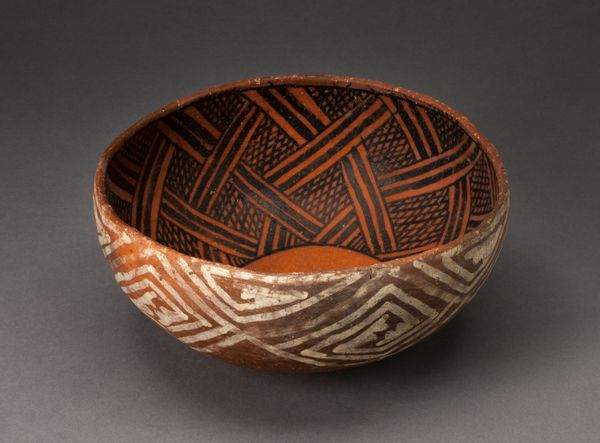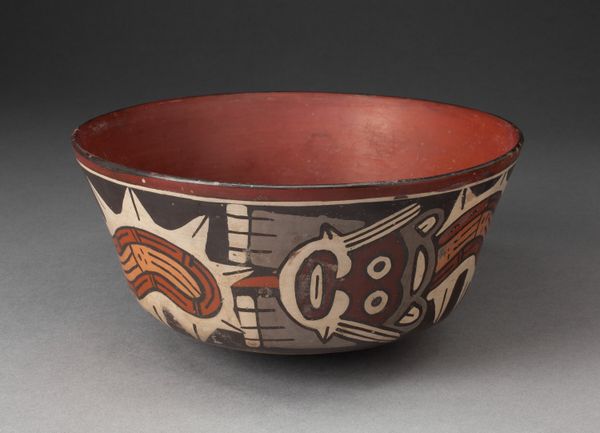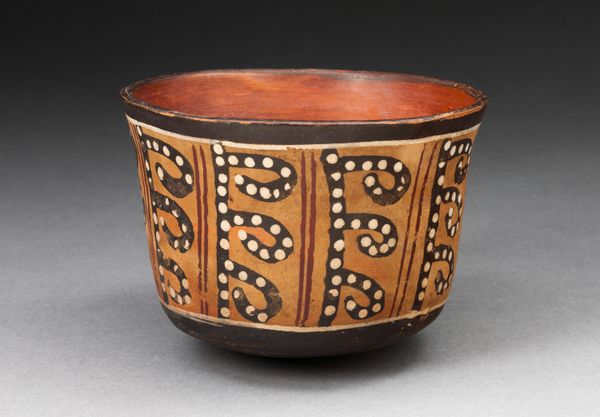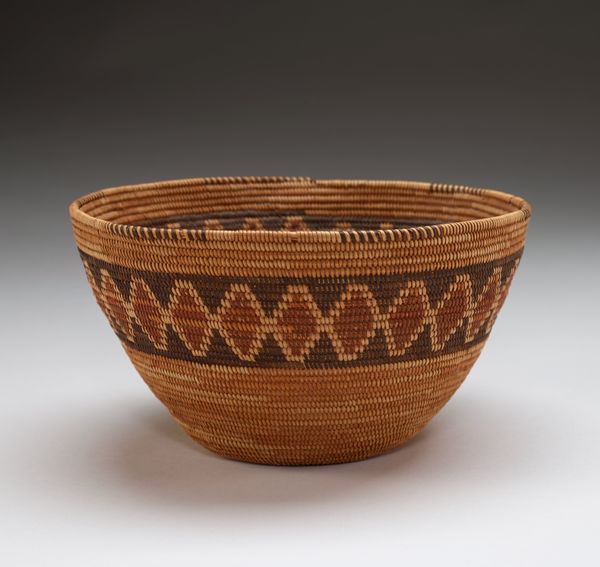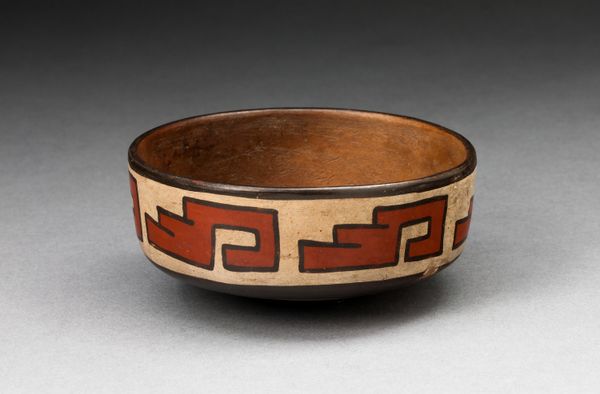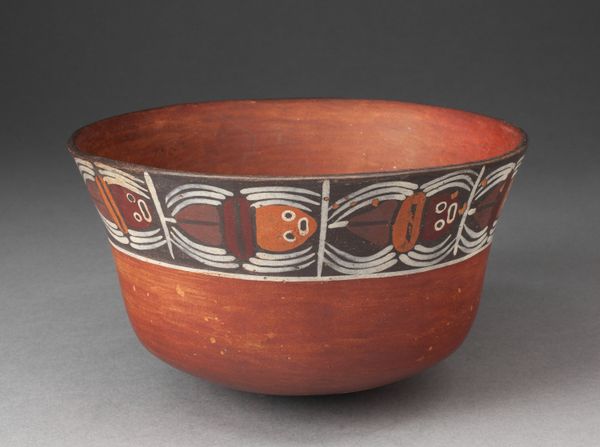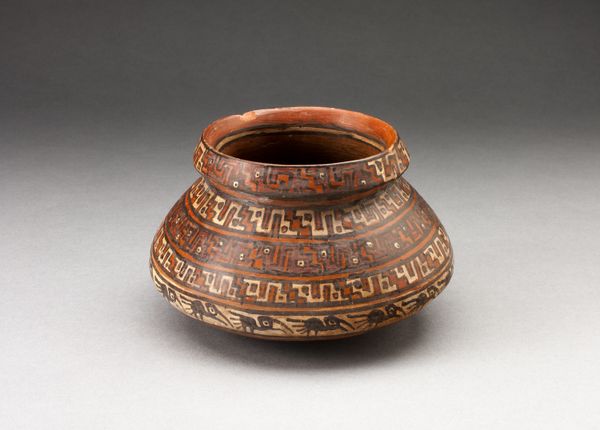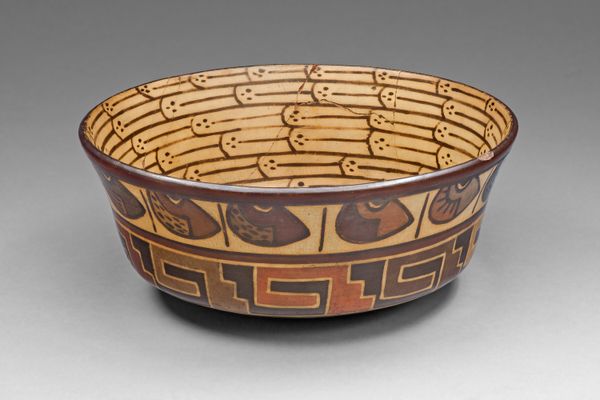
Bowl with Geometric Black-and-White Motifs on Interior and Exterior Survace Possibly 1300 - 1400
0:00
0:00
ceramic
#
ceramic
#
geometric
#
indigenous-americas
Dimensions: Diam. 23.5 cm (9 1/4 in.)
Copyright: Public Domain
Editor: Here we have a ceramic bowl, thought to be from around 1300 to 1400, created by an artist from the Cibola culture. The contrasting geometric motifs definitely catch my eye. It feels both ancient and surprisingly modern. What stories do you see woven into its design? Curator: Well, this bowl isn’t just a functional object; it's a cultural artifact embedded in a specific time and place. The geometric designs are likely more than just decoration. We need to consider the socio-political context. Pottery like this played a vital role in the lives of the ancestral Pueblo people. These bowls, crafted by women, weren't just used for cooking and storage but were central to rituals, feasts, and trade. Editor: So the act of creation, and even the use of the bowl, were social acts? Curator: Absolutely. The motifs could have represented clan symbols, stories, or even prayers for rain and good harvest, intended for a broad audience. Look at how the black and white are not just contrasting colors, but visual markers, demanding attention and likely communicating something significant to its users and viewers within that society. What is communicated depends on cultural understandings lost to time. How do museums then shape the understanding of Indigenous art? Editor: That's a great question. Often, pieces like this are presented without the rich historical context that you’ve described, displayed as isolated aesthetic objects rather than cultural touchstones. Curator: Precisely. And that risks decontextualizing the artwork, stripping it of its social power and meaning. Editor: I see what you mean. Understanding its original cultural role changes how we perceive its visual elements. I’ll definitely look at these pieces differently from now on. Curator: I’m glad! Thinking about art as a form of cultural communication makes the viewing experience more rewarding.
Comments
No comments
Be the first to comment and join the conversation on the ultimate creative platform.
